Discover 11 hidden attractions, cool sights, and unusual things to do in Hawes (United Kingdom). Don't miss out on these must-see attractions: Hardraw Force, Gayle Mill, and Wain Wath Force. Also, be sure to include East Gill Force in your itinerary.
Below, you can find the list of the most amazing places you should visit in Hawes (England).
Table of Contents
Hardraw Force
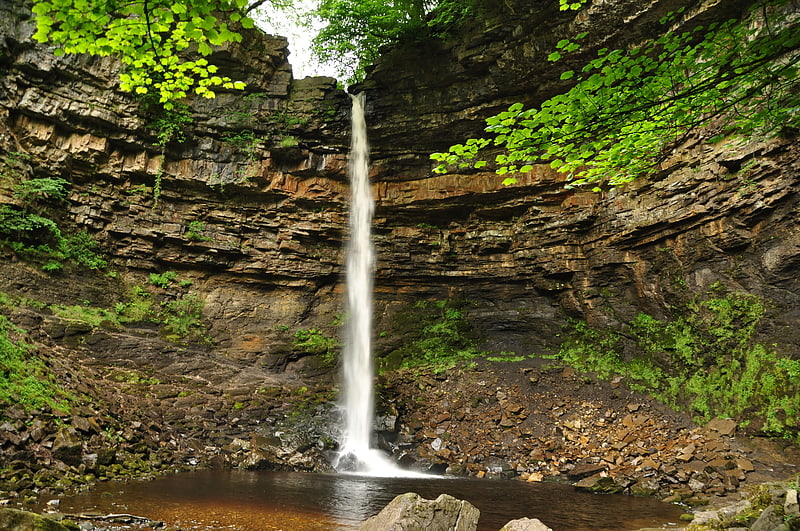
Waterfall in England. Hardraw Force is a waterfall on the Hardraw Beck in Hardraw Scar, a wooded ravine just outside the hamlet of Hardraw, 0.9 miles north of the town of Hawes, Wensleydale in the Yorkshire Dales. The Pennine Way long distance footpath passes close by.
Comprising a single drop of 100 feet (30 m) from a rocky overhang, Hardraw Force is claimed to be England's highest unbroken waterfall – at least discounting underground falls. The underground waterfall inside nearby Gaping Gill on the western flank of Ingleborough has an unbroken fall of over 300 feet (91 m).
Geologically, the bed of the river and plunge pool is shale; on top of that is sandstone and the top layer is carboniferous limestone.
Public viewing of the falls is available through a turnstile located to one side of the Green Dragon Inn in Hardraw village. It is currently £4 per adult, £2.50 per child. Access behind the falls is now prohibited.[1]
Gayle Mill

Museum in England. Gayle Mill, dating from about 1784, is thought to be the oldest structurally unaltered cotton mill in existence. It is located in the Wensleydale hamlet of Gayle, England, 1 mile south of the market town of Hawes. It lies within the Yorkshire Dales National Park. The mill is owned by Cultura Trust (formerly known as the North of England Civic Trust; it was operated by a local volunteer group which paid a modest rent to the owner until March 2018 when the property was closed to enable additional repairs to be undertaken to make it safe for visitors.[2]
Address: Gayle Mill Mill Lane, DL8 3RZ Gayle
Wain Wath Force
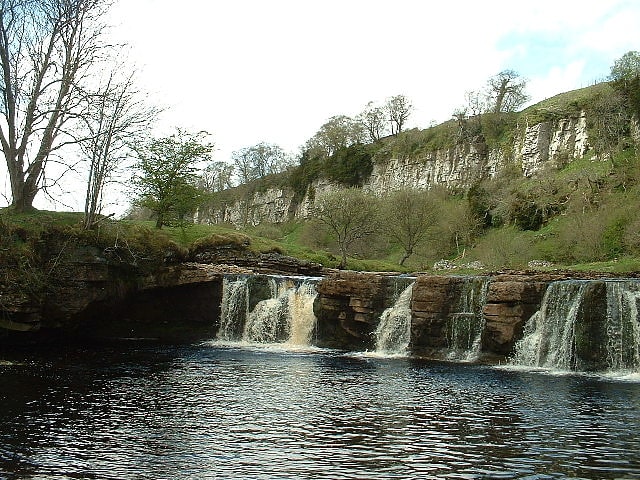
Waterfall in England. Wain Wath Force is a waterfall on the River Swale in the Yorkshire Dales National Park, North Yorkshire, England. The falls are at grid reference NY883015, 0.6 miles upstream from the hamlet of Keld which has three other waterfalls in its vicinity. The names of waterfalls in the north of England often contain "force" after the Old Norse word foss, which means "waterfall".
Its name derives from the ford above the fall, wath being the Anglo-Saxon word for a ford. Wain may denote that it was passable for a cart or wain.
Wain Wath Force is not a substantial waterfall: it has a drop of only around 1.5 metres as the river flows beneath the limestone cliffs of Cotterby Scar. Despite its modest height it is popular with visitors; the Coast to Coast long-distance footpath passes the falls on the north bank of the River Swale while the main motor road up Upper Swaledale passes on the south bank.[3]
East Gill Force
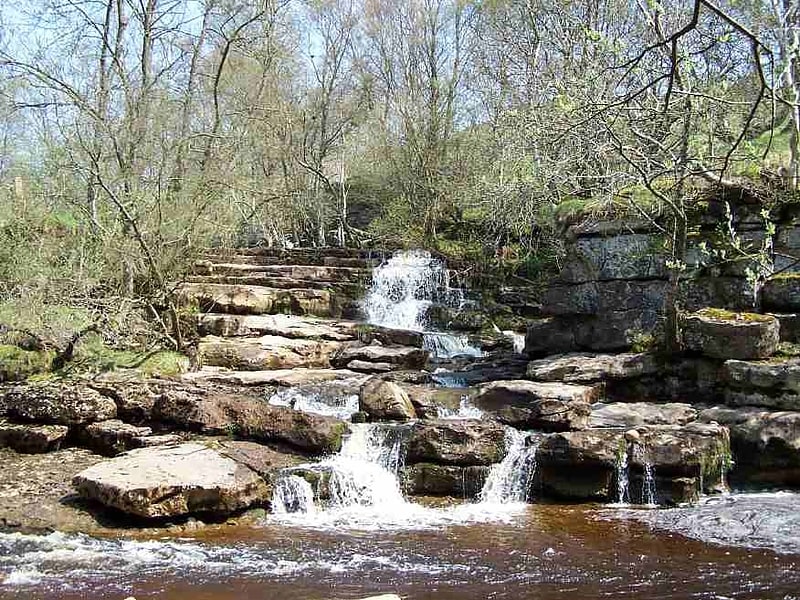
Waterfall in England. East Gill Force is a waterfall in Swaledale, 330 yards east of the hamlet of Keld, in the Yorkshire Dales National Park, North Yorkshire, England. The falls are located on East Gill at grid reference NY896012, just before its confluence with the River Swale at the point where the Pennine Way and the Coast to Coast Walk intersect. The falls are a popular spot for visitors, not just long-distance walkers but also families and picnickers because of the proximity of the road. East Gill Force has two main torrents: the upper falls have an impressive 15-foot drop whilst the lower section is a series of stepped cascades that fall 9.8 feet as East Gill enters the River Swale.
East Gill Force is one of four waterfalls in the Keld area, the others being Kisdon Force, Catrake Force and Wain Wath Force that occur where the river cuts a gorge through the carboniferous limestone between the hills of Kisdon and Rogan's Seat. The falls in this area are called "forces" after the Norse word foss, meaning waterfall. The falls are surrounded by deciduous broadleaved woodland.
East Gill Force is sometimes mistaken for the nearby Catrake Force (on the River Swale proper), perhaps because the latter is marked on the Ordnance Survey map but is less prominent and less easily accessible.[4]
Kisdon Force

Waterfall in England. Kisdon Force is a series of waterfalls on the River Swale in Swaledale, England. The falls are situated within the Yorkshire Dales National Park in the county of North Yorkshire, 500 metres downstream from the small hamlet of Keld at grid reference NY898010.
Kisdon Force is one of several waterfalls on the Swale in the Keld area: the others are East Gill Force, Catrake Force and Wain Wath Force. All occur where the river cuts a gorge through the Carboniferous Limestone between the hills of Kisdon and Rogan's Seat. The falls in this area are termed "forces" after the Norse word fors or foss, which means "waterfall". Both upper and lower Kisdon Force can be negotiated by canoeists, although a high degree of skill and experience is needed. The upper falls are rated Grade IV whilst the lower falls are rated more difficult at Grade V.
The falls drop 10 metres (33 ft) over two cascades and are surrounded by Kisdon Force Woods, a Site of Special Scientific Interest covering an area of 38 hectares, which consists of mixed broad-leaved woodland with ash, wych elm and rowan dominating. In the spring, primroses grow profusely in the area. The falls can be easily visited by a riverside path from Keld. However, care should be taken since the stones around the falls are often wet and slippery. Visitor numbers to the falls are swollen by walkers along the Pennine Way, a long-distance footpath that passes the falls.[5]
St Mary and St John's Church

Church in England. St Mary and St John's Church, Hardraw is a Grade II listed parish church in the Church of England in Hardraw, North Yorkshire.[6]
Address: Bellow Hill, DL8 3LZ Hawes
Dales Countryside Museum
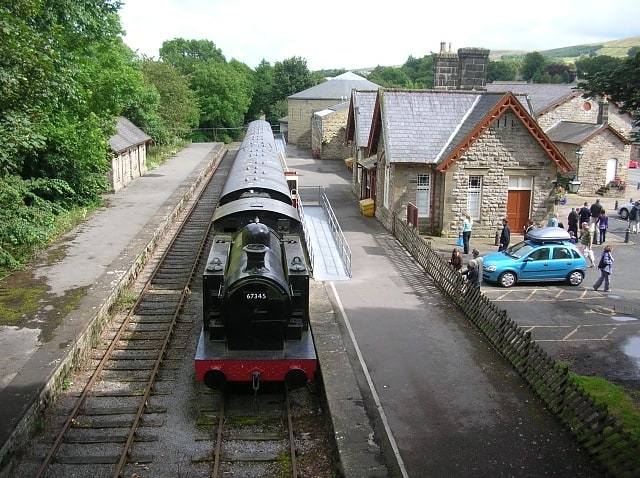
Museum in Hawes, England. The Dales Countryside Museum is a local museum for the Yorkshire Dales National Park in Northern England. Run by the National Park Authority, it tells the story of the people who have lived and worked in the Yorkshire Dales for over a 1,000 years. The museum is located beside the disused Hawes railway station in the small town of Hawes at the head of Wensleydale. The museum's outdoor display includes a real steam train and carriages on the track bed of the former Wensleydale Railway.
The railway station remains in its original site, now part of Museum building. Since 2015, part of the redundant station has been rented to a business operating a bike shop and later, also a cafe.
The steam engine a Robert Stephenson & Hawthorn Works No 7845 No.12 Current number 67345 0-6-0T was built in 1955 by Robert Stephenson & Hawthorn to work at Hams Hall Power Station at Sutton Coalfield. Little is known about the early preservation history of the locomotive although it was at Sheringham on the North Norfolk railway in 1975/76. It moved to Ruddington, at what is now the Great Central Railway at Nottingham, in 1998 for cosmetic restoration. For many years the locomotive has been on display at the Dales countryside Museum at Hawes at Wensleydale.
It carries the number 67345 as this was the number of the NER G5 class locomotive which hauled the last passenger train out of Hawes station in 1959. The last freight train used the line in 1964 after which the line was lifted.[7]
Address: Station Yard, DL8 3NT Hawes
Cotter Force
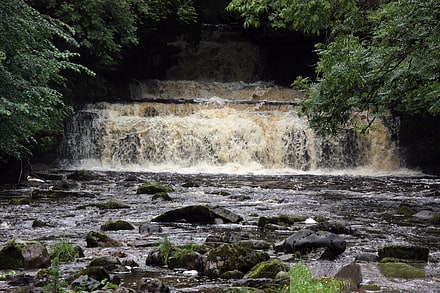
Waterfall in England. Cotter Force is a small waterfall on Cotterdale Beck, a minor tributary of the River Ure, near the mouth of Cotterdale, a side dale in Wensleydale, North Yorkshire, England.[8]
St Margaret's Church
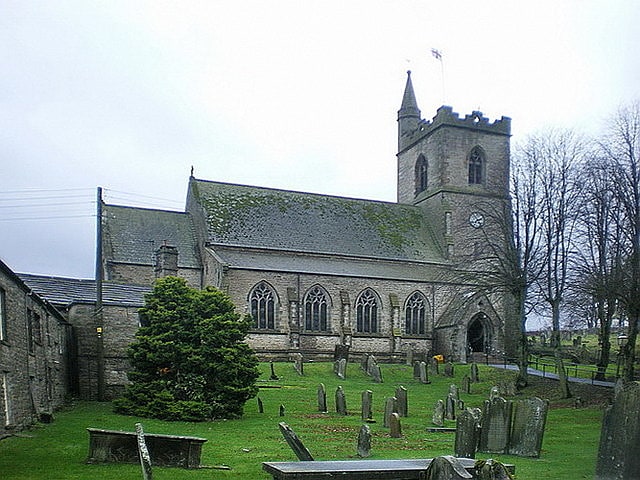
St Margaret's Church is a Grade II listed parish church in the Church of England in Hawes, North Yorkshire.[9]
Wensleydale
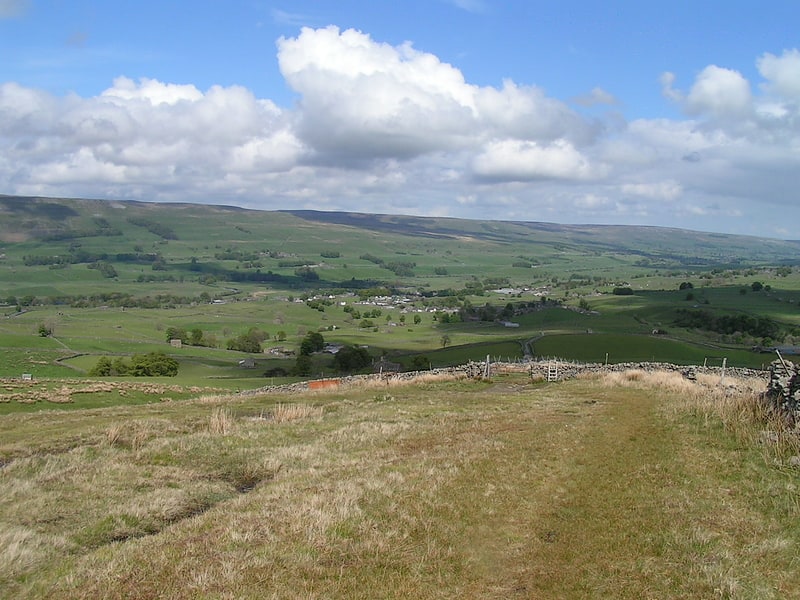
Landmark region with moors and mountains. Wensleydale is the dale or upper valley of the River Ure on the east side of the Pennines, one of the Yorkshire Dales in North Yorkshire, England.
Wensleydale is one of only a few Yorkshire Dales not currently named after its principal river, but the older name, Yoredale, can still be seen on some maps and as the Yoredale Series of geological strata. The dale takes its name from the village of Wensley, once the market town for the dale.
The valley is famous for its cheese, with the main commercial production at Hawes. Also famous are its ales from Theakston Brewery and Black Sheep Brewery in Masham. Most of the dale is within the Yorkshire Dales National Park. Part of lower Wensleydale, below East Witton, is within the Nidderdale Area of Outstanding Natural Beauty.
Addlebrough, a 481-metre-high (1,578-foot) fell, dominates the landscape of the upper dale, and Penhill at 526 metres (1,726 feet) is prominent in the lower dale.[10]
Catrake Force

Waterfall in England. Catrake Force is a waterfall on the River Swale in North Yorkshire, England. It is not visible from the road but is accessible via a campsite in Keld. It comprises a series of four steps, each its own small waterfall, and each with a very different character – the largest single drop being about 20 feet.
It lies just upstream of Keld, downstream from Wain Wath Force. The next waterfall downstream is Kisdon Force. Waterfalls in the north of England are often termed Forces after the Norse word Foss which means waterfall, whilst Catrake derives from the Latin cataracta (waterfall) via Middle English.[11]